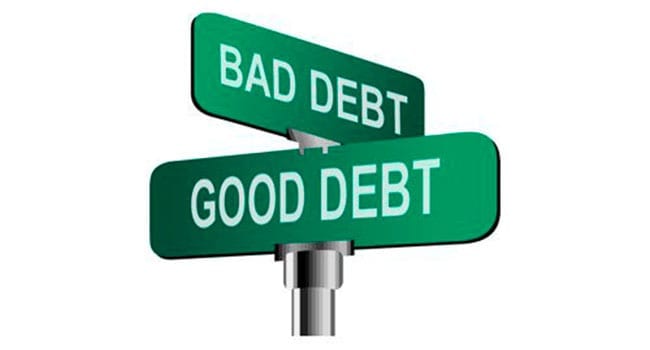 Debt is often a four-letter word – but, when used correctly, it can be a real benefit to your financial planning.
Debt is often a four-letter word – but, when used correctly, it can be a real benefit to your financial planning.
Most of us use debt when we buy a home, a second property, automobiles and other large purchases. We simply don’t have enough cash available to do otherwise.
Many people are very comfortable using debt in this manner but would never think of using it to help with their financial planning.
You can use debt as leverage to increase the amount of money you have to invest. Debt can enhance your returns but can also increase your losses.
If using debt, it’s best to stick with investments that have a history of slow, steady returns. And keep the debt to a reasonable amount. Start out with a loan you can pay off within a couple of years. Pay the loan off and repeat the process. Never take out an investment loan for more than what you’re willing to lose.
Using debt for purchases rather than paying cash is often a good strategy when the cost of borrowing is lower than the return on our investments. This often happens when interest rates are low or when companies offer discounted loan rates as sales incentives. When offered a low-rate financing option, it’s always best to make sure the purchase price of the item isn’t going to be lower if you pay cash. If it is, do a time value calculation and determine if it’s better to pay cash or take the financing.
There can also be a tax benefit to using debt for investing. Canada Revenue Agency allows us to write off the interest cost of debt, as long as the money was borrowed to earn investment income. The rules are strict, so make sure you discuss this with your tax preparer and your financial planner before considering using debt in your financial planning. And be sure to keep detailed records.
During the accumulation phase of your life, using debt to cover financial emergencies, unexpected expenses or short-term cash needs is often better than taking money out of your investment accounts. Especially if that money happens to be in registered retirement savings plans (RRSPs). Any withdrawals from RRSPs are fully taxable, so the money you would save in taxes by not making an RRSP withdrawal is often way less than the interest cost you would pay by borrowing the money to cover the expense and paying the debt off over time. Also, unlike a tax-free savings account (TFSA), once money has been withdrawn from an RRSP, it can’t be replaced. Stopping monthly contributions is often a better way to cover short-term needs than using an RRSP withdrawal.
In retirement, especially in the later years, you can use debt to enhance your income or to remain in your home longer. With the continual increases in real estate values, this option is more popular every year.
As real estate becomes a larger percentage of your net worth, you may need to think of the equity in your home as part of your investment portfolio. Accessing this equity can provide you with tax-free income. You can access this equity with a traditional mortgage, a home equity line of credit or a reverse mortgage. Each option has risks and rewards, but all will allow you to spend some of the equity in your home while maintaining ownership.
Using debt isn’t for everyone and it can lead to significant financial difficulties if things go wrong. So always exercise extreme caution and discuss all the risks and rewards with your accountant and planner before proceeding.
Bill Green is an hourly financial and estate planner, public speaker and author of The Success Tax Shuffle. Bill has over 26 years of experience in the financial services industry.
Bill is a Troy Media Thought Leader. Why aren’t you?
The views, opinions and positions expressed by columnists and contributors are the author’s alone. They do not inherently or expressly reflect the views, opinions and/or positions of our publication.


